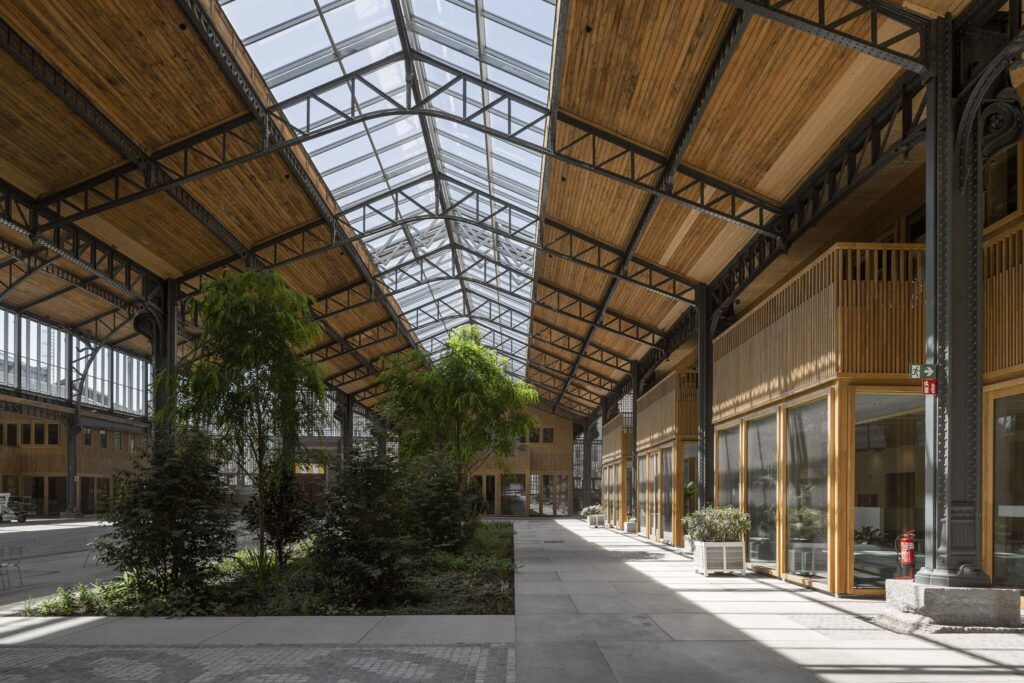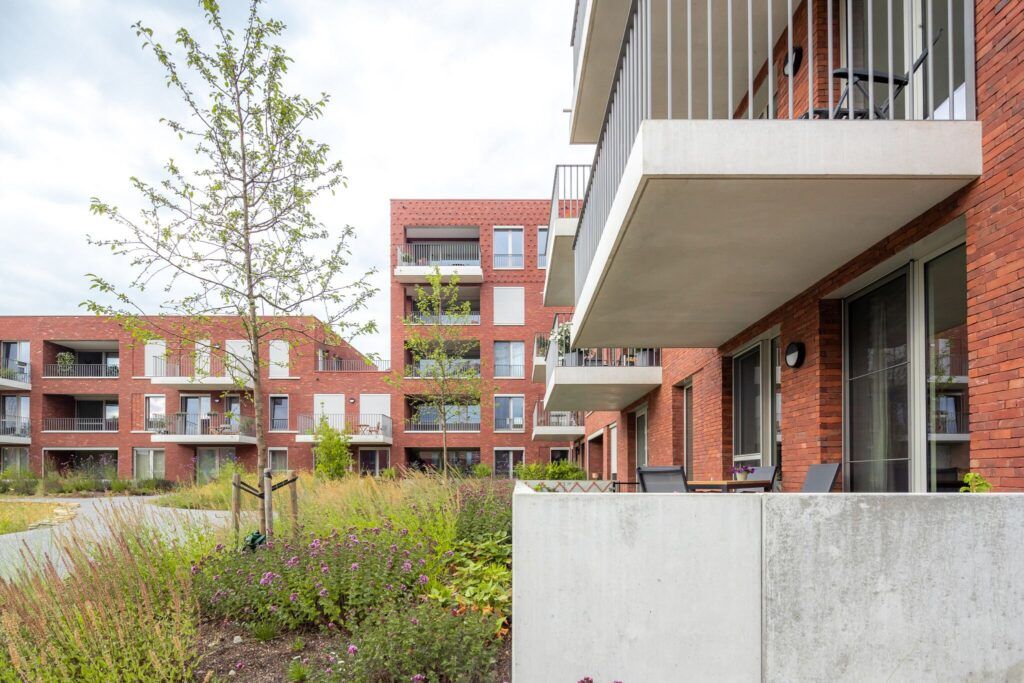We shape the sustainable environments of tomorrow.
We design resilient landscapes and vibrant urban environments
OMGEVING is an international multidisciplinary design office that shapes the sustainable living environments of tomorrow through resilient landscapes and vibrant urban spaces. In the city, in the villages and in the open space, our cooperative design office tackles complex spatial issues and social challenges on a wide array of scales. We are more than 80 experienced and dedicated spatial planners, landscape architects, urban designers and engineers. In every design project from landscaping plans, park designs, and designs for public spaces through master plans, regional visions and complex planning processes, we not only seek the added spatial value, but also the social value. This commitment is reflected in our innovative research, creative design solutions, and solid construction work.


Resilient landscapes
Resilient landscapes contribute to the implementation and restoration of scenic and natural processes. With our landscape system approach, we offer a powerful solution to social challenges of today and tomorrow, such as climate change, declining biodiversity, decreasing water security, congested open space and threatened heritage.
OMGEVING therefore strongly commits to park designs that increase biodiversity, water-related design projects that strengthen green-blue networks, visions that enhance the open space, and heritage plans that restore the historical soul of the place. This is how we contribute to the resilient landscape of tomorrow as an integrated and future-proof landscape system.

Biodiverse parks
Nature is our best ally in tackling the loss of biodiversity. Over the past few centuries, the rapid expansion and impact of human settlements has led to a big loss of biodiversity and habitat for animal species. Our approach to park design from the perspective of biodiversity helps to reduce the human impact and to create space for other life-forms. One must understand the needs of various species to create conditions where they can thrive. At OMGEVING we aim for park designs that support the life and growth of area-specific plant and animal species.

Green-blue ecosystems
Our design approach of green-blue ecosystems provides creative and innovative solutions to climate challenges such as increasing precipitation, drought, and heat stress. Restoring and strengthening green-blue networks on a large scale arm us against more extreme periods of heavy rainfall and extreme drought. By de-paving our paved surfaces and buildings, we make space for more greenery and water storage. Our integrated design approach results in resilient green-blue ecosystems that, besides rainwater storage, also provide rich biodiversity with vegetation that can withstand climate change.

Enhanced open space
Open space has become increasingly fragmented over the years and is in danger of disappearing. However, the open space fulfills an important role in terms of climate such as managing more extreme weather conditions such as drought, floods and heat, but also for carbon capture and emission reduction. Maximum preservation of the open space is crucial. Besides safeguarding, it is important to enhance its quality. How this can be achieved, depends on the identity of the open space, which is, among other things, determined by the type of landscape, its location and the functions that have a place in it.

Rediscovered heritage
Our heritage landscapes need protection and reinforcement. We find it important to develop an advanced understanding of the project location, not only based on historical, tangible or visible elements but also on intangible elements. In our heritage related design projects, we always try to detect the specific significance and authenticity of a place through a thorough analysis of the given context and a bottom-up approach. With all the detected information we create unique, rediscovered heritage landscapes which are deeply connected to their context.
Vibrant urban environments
We create vibrant urban environments to tackle challenges such as increasing urbanisation, congested open space, increasing mobility and growing social inequality. With policy plans, master plans, surveys and studies, OMGEVING resolutely opts for an integrated approach in which sustainability and the creation of social added value are a priority.
The future will require us to do more with less space. That is why we focus on reinforcing cores to protect the open space. Within the residential environments, we want to create inclusive neighbourhoods to preserve and improve the living quality. Because urban environments need to accomodate more than just houses, we integrate working activities and mobility in a future-proof and sustainable way. To increase accessibility, we create sustainable mobility projects that embed infrastructure in the landscape.

Reinforced cores
Existing village and city cores must be carefully densified in order to reduce the pressure on the open space. This must be done while safeguarding the quality of life within the cores. OMGEVING feels the need for smart densification strategies tailored to the specific characteristics of a location. Offering a variety of housing typologies can create an interesting mix of residents. Densification is not a purpose in itself but a strategy to guarantee a sustainable future for built areas. It goes hand-in-hand with qualitative public space, coherent slow networks, a mix of functions, etc.

Inclusive neighbourhoods
Inclusive neighbourhoods are neighbourhoods where the living quality is high and where all inhabitants can enjoy the same pleasant living environment. At OMGEVING we strive to create projects on a human scale and to generate a social impact. We believe in the connecting power of qualitative living environments. Not only the scale of the buildings is important, also the typologies, the user perceptions and the layout of the public space define the character of the neighbourhood. Inspired by the users of tomorrow, we design enjoyable and useful spaces for people, together with people.

Future-proof work hubs
Within the built environment, in a city or a village, we do more than just residing, we live there. Living, in the complete sense of the word, includes working, doing sports, participating in cultural events etc. We have to start living in a denser environment, this means we must do all these activities within this denser environment and with more respect to nature. OMGEVING helps shaping these activities. Future-proof activity is interwoven into an urban fabric and helps enrich the living environment. On the other hand it has maximum respect for and supports the open space and nature.

Sustainable mobility
Infrastructure of the future accommodates the modal shift. Today’s challenges of mobility require a multidisciplinary design strategy of both infrastructural and territorial ecologies. OMGEVING engages in large sustainable mobility infrastructure projects as a link between technical requirements and environmental, ecological and social benefits. What binds the landscape integration of our ring projects, the integration of cycle highways projects and our designs for walkable urban environments, is the integrated design approach that thus contributes to the modal shift towards sustainable mobility.
Do you want to help to shape resilient landscapes and vibrant urban environments?
Stay up to date
Check our latest posts on social media below.



